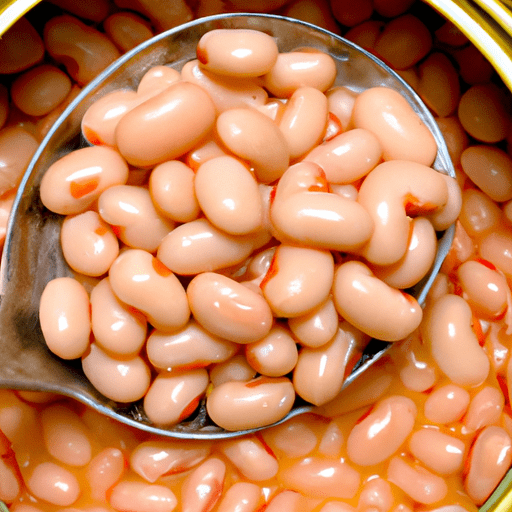The Versatile and Nutritious Canned Canellini Beans
Canned canellini beans are a pantry staple that every home cook should have on hand. These versatile legumes offer a delicate flavor and creamy texture, making them a valuable ingredient in a wide range of dishes. Whether you’re looking to add a protein boost to your salads or create a hearty soup, canned canellini beans are a convenient and nutritious choice. Let’s explore their taste, common culinary uses, nutritional value, and some interesting facts about these little wonders.
Taste and Texture
Canned canellini beans, also known as white kidney beans, have a mild and subtle flavor. They possess a creamy and smooth texture that adds richness and depth to any recipe they’re added to. Unlike other beans, canellini beans have a delicate skin that blends effortlessly into soups and stews.
Common Culinary Uses
Canned canellini beans are incredibly versatile and can be used in a variety of recipes. They harmonize well with various herbs, spices, vegetables, and meats. Here are some popular ways to incorporate these beans into your cooking:
Soups and Stews: The creamy texture of canellini beans makes them a perfect addition to soups and stews. Try them in classic Italian dishes like Pasta e Fagioli or Tuscan white bean soup.
Salads: Add a protein-packed punch to your salads by tossing in some canned canellini beans. They pair well with fresh vegetables, herbs, and dressings.
Dips and Spreads: Blend canellini beans with garlic, lemon juice, and olive oil to create a delicious and healthy dip or spread. It’s a fantastic alternative to traditional hummus.
Pasta and Grain Dishes: Incorporate canellini beans into pasta or grain-based dishes to enhance their flavor and boost their nutrition content. They work wonderfully with roasted vegetables, garlic, and Parmesan cheese.
Nutritional Value
Canned canellini beans not only taste great but are also packed with essential nutrients. Here’s a breakdown of their nutritional value per 100g serving:
- Calories: 82
- Protein: 6g
- Carbohydrates: 14g
- Fat: 0.5g
- Fiber: 4g
- Iron: 2mg
- Magnesium: 37mg
- Potassium: 272mg
These beans are an excellent source of plant-based protein, making them an ideal option for vegetarians and vegans. They are also loaded with dietary fiber, which aids digestion and helps maintain a healthy gut. Additionally, canellini beans are low in fat and provide a good dose of iron, magnesium, and potassium.
Fun Facts about Canned Canellini Beans
Canellini beans have a rich history, dating back to ancient Central and South America. They were brought to Europe by Christopher Columbus during his voyages.
In Italian cuisine, canellini beans are a staple ingredient in many traditional dishes, including Minestrone soup and Pasta con Fagioli.
These beans are a part of the legume family, along with chickpeas, lentils, and other varieties of beans. Legumes are known for their high nutritional value and sustainable cultivation.
Canellini beans are often used to make a puree called “Fagioli all’Uccelletto,” a popular side dish in Tuscany, Italy. It consists of simmering the beans with garlic, tomato, sage, and olive oil.
They are also commonly used as a base for vegan and vegetarian patties and burgers as they help bind the ingredients together while adding creaminess.
Canned canellini beans are not only a versatile ingredient but also a nutritional powerhouse. With their creamy texture and mild flavor, these little wonders can elevate any dish with ease. From hearty soups to satisfying salads, their uses are limited only by your imagination. So, go ahead and stock up on these pantry essentials and explore the countless possibilities they bring to your kitchen!
Canned Cannellini Beans
Origin: Cannellini beans, also known as white kidney beans, are native to the Americas, specifically to the Andean region of South America. They have been cultivated for over 4,000 years.
Common Uses: Canned Cannellini beans are widely used in various cuisines around the world. They are a staple in Italian cooking, used in dishes like pasta e fagioli, minestrone soup, and Tuscan bean salad. They are also commonly used in stews, casseroles, and bean dips.
Nutritional Benefits: Cannellini beans are highly nutritious and a good source of protein, fiber, and complex carbohydrates. They are low in fat and contain essential vitamins and minerals, including folate, iron, magnesium, and potassium. Additionally, they are cholesterol-free and contain no saturated fat.
Unique Properties: Cannellini beans have a creamy, buttery texture and a mild flavor that allows them to easily absorb the flavors of other ingredients. Their creamy texture makes them a popular choice for purees, soups, and dips. They are also commonly used as a meat substitute in vegetarian and vegan recipes.
Historical Significance: Beans, including cannellini beans, played an important role in the history of the Americas. They were a staple food for indigenous civilizations, including the Inca and Aztec empires. These beans were introduced to Europe by explorers during the Age of Discovery and have since become a significant part of European cuisine. Today, canned cannellini beans offer convenience and ease of use in modern cooking.




Use the share button below if you liked it.
It makes me smile, when I see it.